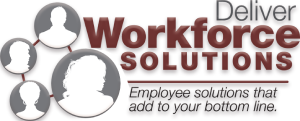
Training employees is considered both an investment and a cost to a company. According to statista.com, 82.5 billion U.S. dollars were spent on workplace training in 2020. The expenditures included the budget allocated by businesses for training activities, training related technology and, salaries of trainers. If training does not contribute to the profitability of the company, it is a substantial cost with little or no return. So, it is important to create a training plan for the company to drive profits.
A training plan consists of the company’s key performance indicators (KPIs), the training program aligned to the KPIs, and assessments to measure the KPIs, effectiveness of the training program, as well as employees.
Begin with the KPIs because they set the direction for training. Next, conduct a needs assessment to determine the gaps leading to the achievement of the KPIs and define training goals for the employees. The needs assessment should take into consideration new skills, new techniques for old skills, new employees, and experienced employees, different roles such as leadership, as well as budget, and training resources.
When developing a training plan, it is important to know which training methods are most effective for your target audience. Martin, Barbara & Kolomitro, Klodiana & Lam, Tony. (2013) conducted a review and analysis of training methods. Thirteen methods were identified based on their criteria. They included case studies, games-based training, internships, job rotation, job shadowing, lecture, mentoring and apprenticeship, programmed instruction, role-modeling, role-play, simulation, stimulus-based training, and team training. The results suggested that many of the methods were not interactive, technology has advanced the deliverability options, much of the training was application-based and completed outside of the workday.
I-CAR training is a gold standard model to consider when developing a training plan. The two programs include the employee-based platinum program and the gold star program which is collision shop-based. The training utilizes a variety of training methods identified above. The platinum program consists of certifications and grows with the employee. The online certifications are completed outside of work while some such as welding are required to be completed during the workday. Trainers travel to shops to test employees for the welding certification. Training is ongoing for all levels because there are always new technologies to learn.
A quality training plan must include assessments on multiple levels. Assess the employee’s knowledge and skills learned from the training. This helps to identify who may need additional support. If many employees failed to gain the knowledge and skills being assessed, that is an indication that the training was ineffective and needs modifications.
Assess whether the training led to the achievement of the KPIs. I-CAR developed a calculator to measure Return on Investment (ROI). Develop a tool or method to determine if your training program increases ROI.
Assess the quality of the training program, especially if the KPIs were not met. That indicates that something in the training activities needs to be added, deleted, or modified.
For further assistance with training plans, contact kathy@deliverworkforce.com or check us out on www.deliverworkforce.com
References
Martin, Barbara & Kolomitro, Klodiana & Lam, Tony. (2013). Training Methods: A Review and Analysis. Human Resource Development Review. 13. 11-35. 10.1177/1534484313497947.
#AUTO #AUTOREPAIR #CONSTRUCTION #MANUFACTURING #RETAIL #TRAINING
